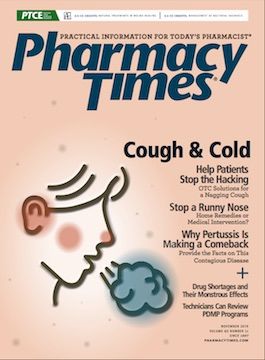Be Careful of Using Drug Abbreviations
Trying to save time can cause confusion, errors, and potentially harmful delays in treatment.
The FDA and the institute for safe medication practices (ISMP) have repeatedly cautioned practitioners about using abbreviations for drug names, because they often cause confusion, errors, and potentially harmful delays in treatment. Use of the error-prone tPA for the tissue plasminogen activator alteplase (Activase) is a prime example.
A recent report submitted to the ISMP National Medication Errors Reporting Program (ISMP MERP) described a situation in which a STAT order for alteplase for a patient in an intensive care unit (ICU) had been sent to the pharmacy. A nurse called the pharmacy to ask if the patient’s tPA was ready. A newly employed pharmacist received the call and, being unfamiliar with the abbreviation tPA, misheard the request as TPN (total parenteral nutrition, which is properly referred to as parenteral nutrition [PN]). Because he was getting PN solutions ready for delivery, he told the nurse the solution would be there in a few minutes. The nurse assumed that the pharmacist was talking about the tPA, not TPN.
Later, the ICU nurse called the pharmacy again for the medication. Another pharmacist who was verifying orders saw the STAT order and immediately dispensed a vial of alteplase. She then realized that she should have mixed the product per protocol for inpatient use. In the rush to get the mixed drug to the unit, the pharmacist reconstituted a second vial but forgot to remove the bolus dose first and prepare a proper patient dose for infusion using the remaining medication in the vial. Because of the confusion, the nurse prepared the bolus dose and the infusion from the first vial that had been dispensed. The delay led to calling a rapid response team for the patient with a stroke, who required immediate attention.
The use of tPA has also been confused with TNK, a misused abbreviation for tenecteplase (TNKase), and TXA, an abbreviation for tranexamic acid. Although TNKase is a tPA, it is not approved to treat ischemic stroke. Tranexamic acid is an antifibrinolytic agent commonly used in patients who are hemorrhaging or at risk of hemorrhage. Thus, mix-ups with alteplase have been harmful. Two recent reports submitted to the ISMP MERP describing mix-ups between alteplase and tranexamic acid are evidence that practitioners think of these medications by their error-prone abbreviations, tPA and TXA, respectively.
The first event involved a patient who received tranexamic acid instead of alteplase. Confusing tPA and tranexamic acid, a practitioner accidentally removed tranexamic acid instead of alteplase from an automated dispensing cabinet (ADC), which had accidentally been left on critical override from the night before. Thus, the practitioner was able to remove tranexamic acid for the patient, even though there was no order for the drug. After the wrong drug was administered, the error was realized. Alteplase was given to the patient, but therapy was delayed.
The second report was a good-catch event. In this case, a prescriber mentally mixed up the abbreviations tPA and TXA and prescribed tranexamic acid 87.75 mg intravenous instead of the intended alteplase for a patient who had a stroke. However, because the dose did not seem appropriate for tranexamic acid, a pharmacist contacted the ordering physician for clarification and the order was changed to alteplase.
These events demonstrate how a drug name abbreviation can lead to a mistake. The FDA and ISMP recommend avoiding the use of abbreviations for drug names. Practitioners should refer to medications by their brand and/or generic names only.
Make sure that drug name abbreviations do not appear in any database or information technology, including ADC screens, order entry screens, order sets, protocols, or smart infusion pumps, to avoid perpetuating the use of abbreviations. Alert prescribers to the risk of mental mix-ups between drug name abbreviations, especially TNK, tPA, TPN, and TXA. Additionally, prescribers should include the drug’s indication with orders to further avoid confusion.
In response to the tPA-TPN mix-up described in the first case above, facility pharmacists added the risks associated with drug name abbreviations, including tPA, to a medication safety lecture for new clinicians and covered the topic in an internal newsletter. The hospital plans to enforce the FDA and ISMP recommendation to avoid using tPA and instead refer to the drug only by its brand or generic name. The FDA has also recommended the use of alerts during order processing and on ADC screens to remind clinicians to verify the correct indication. An FDA video discussing confusion involving the use of TNK and tPA is available at medscape.com/viewarticle/850514.
Michael J. Gaunt, PharmD, is a medication safety analyst and the editor of ISMP Medication Safety Alert! Community/Ambulatory Care Edition.

